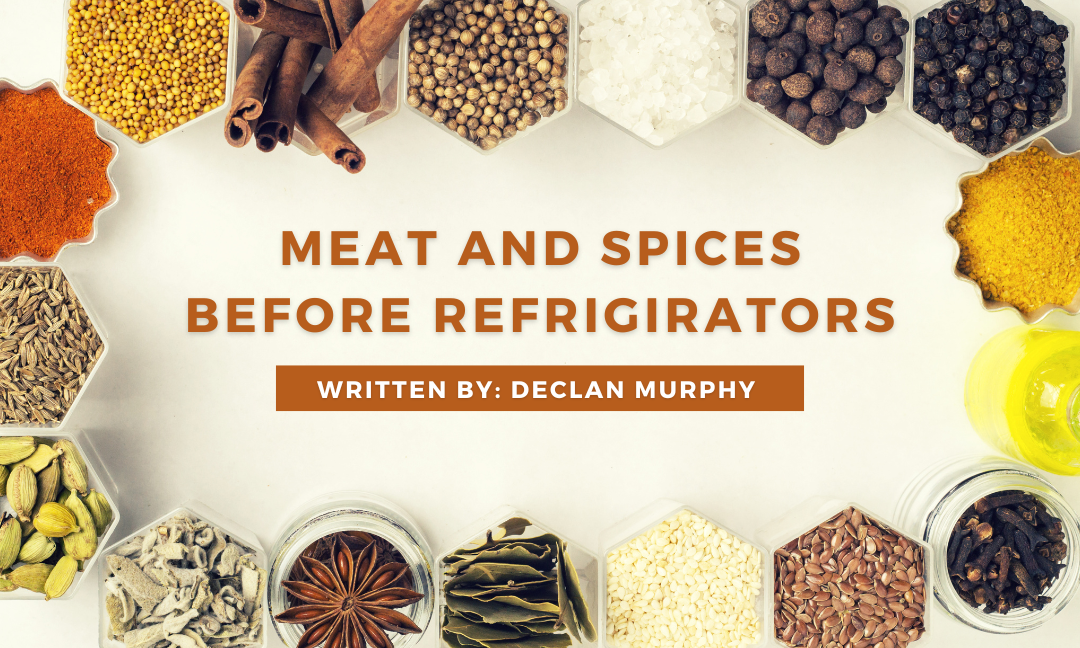Written by Declan Murphy.
Edited by Rayna Almas.
Designed by Eshika Hiremath.
Published by Maryam Khan.
Have you heard the theory that Medieval aristocracy fueled the spice trade between Europe and the east because they wanted to cover the taste of the spoiled meat they ate? It’s a popular story, and often stated as fact, but it turns out that it doesn’t hold up under scrutiny.
Today, let’s explore the truth about meat and spices in a world before refrigeration.

In 1939, J.C. Drummond and Anne Wilbraham published the book The Englishman’s Food: Five Centuries of English Diet, in which they implied that the wealthy of Europe in the Middle Ages (as well as shifty bakers and grocers) were desperate for spices primarily because their meat was typically a bit spoiled and spices covered the smell and flavour of the old food. Since then, this has been perpetuated in many histories, including online and in the classroom.
However, it turns out that the claim is largely false!
During the Middle Ages, the spice trade was one of the major steps towards the globalized market. Europe had an abundance of native herbs for use in cooking, such as sage, rosemary and thyme, as well as pungent vegetables like leeks and onions. However, “spices” (such as pepper, saffron, nutmeg, cloves, and the like) could only be imported through the spice trade from the Middle East and Asia. Popularized by returning Crusaders and pilgrims, exotic spices became trendy throughout the Medieval upper classes as highly prized luxury goods, and were very expensive due to their comparative rarity, their prestige and the distances they had to travel to reach French or English tables (see the map below).
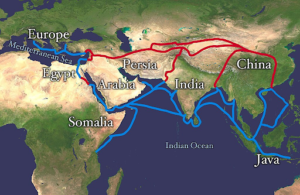
Spices were some of the most expensive materials in Medieval Europe. During the Middle Ages, some brides accepted their dowry in peppercorn, it was so pricey. A pound of ginger once cost as much as a sheep, and a pound of pepper (the cheapest and most popular spice) cost as much as a whole pig. One German source from 1393 equated one pound of nutmeg with the price of seven fat oxen!
Therefore, the idea that butchers, bakers, grocers and other small business owners in the Middle Ages would have used spices to pass off spoiled meat or meat pies to customers is unlikely, since spices were much more expensive than fresh meat was. It doesn’t really make sense, from a business perspective, to use something so pricey to sell something that was comparatively cheap. Later on in the Victorian era, some shady grocers would sell adulterated sugar laced with plaster and other materials (known as “daft”) to bulk out their sugar stock and, thereby, extend their profits, but that was because plaster dust was a lot cheaper than sugar! This practice would have actually cost Medieval merchants profits if they had tried to use expensive spices to swindle customers into buying rotten meat.
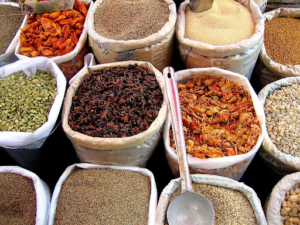
As for the upper class home kitchen, spice was not typically required to cover the flavour of rotten meat for most wealthy families. These families had staff to collect and prepare their foods, as well as large estates (including forests and farms) from which to harvest animals.
Before refrigeration, people certainly had to be careful about food spoilage, but a major solution to this for most households was to kill and eat their animals within a short period. Geese, ducks and chickens, for example, were domesticated early and could be butchered and plucked in the morning for the evening meal on a daily basis. Many meats were seasonal, such as suckling pig in the spring and adult sheep (or mutton) in the colder months, and these animals could be killed, butchered and served as they were needed. Most Medieval households had their own stocked fish ponds, so that fish could be caught and served before they went bad, and almost everyone hunted and/or had professional hunters on their staff to provide venison, boar, rabbits, grouse and other game for the table on a very regular basis.
Certainly some animals were too big to eat entirely the same day they were killed, but Medieval cooks were also experts at preservation, the other major solution to keeping food safe before the freezer was invented. While spices surely played a role in some methods of preservation, such as pickling fish or stewing mince meats, salt was the main force for a lot of preservation methods, such as with salt pork and fish. Smoking and drying were also popular methods for keeping meat edible longer, as we see with jerky and ham, which also reminds us that honey could also be used as a method for preserving meat. Confits were meats that had been salted and slow cooked in its own fat, then sealed up (still in its cooled fat). Stored in a cool place, these “potted meats” could be stored for months safely.
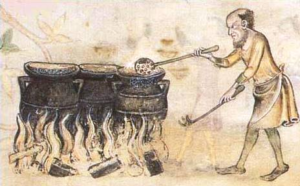
Between hunting/harvesting fresh meat and preserving the rest, wealthy Medieval landowners did not have to eat spoiled meat regularly. Given the awful smell of spoiled meat, it’s a strange notion to think that the wealthy ever would put up with being served spoiled or tainted meat by the staff responsible for their comfort! Aside from extreme events, such as famines or sieges, Medieval rich folk, like today’s wealthy people, generally demanded the best. The fact is, wealthy people during the Middle Ages demanded spice because it was “the best” – they liked the flavours, and the smells, that made eating more pleasurable. Medieval nobility also enjoyed the smell of spices in personal care products, and also believed that spices would improve their health in foods and teas. They also liked to show off their wealth and power by treating their guests to heavily spiced meats and other dishes, since it was a trendy luxury that would elicit admiration, and possible envy, from people around them.
In short, spices were in demand by the Medieval upper crust because they tasted good and reflected their high social status because they were precious luxury goods.
In fact, the only people in the Middle Ages who might have been desperate enough to eat spoiled or tainted meats were the poor and lower classes, and these were exactly the people who simply couldn’t afford much by way of exotic spices. Many non-wealthy Medieval people avoided eating spoiled meat in similar ways to the wealthier people, by eating recently harvested/hunted animals and by preserving the meat correctly. Foods such as salt pork, dried fish and potted meat were popular amongst the labourers of Medieval Europe for this reason. They also made due with cheaper cuts, such as fat, to add to lentil stews. However, they also avoided eating rotten meat by eating less meat in general, as most plain Medieval diets were heavy on seasonal greens, grains, carbs, nuts, lentils and beans, as well as dairy. Medieval peasants flavoured their meals, as well, though they relied much more on the local garlic, leeks, chives and sage to do so.
Therefore, the old idea that the Medieval spice trade was fueled by people tired of eating rotten meat needs to be reassessed. The wealthy people who could afford spices could also easily afford fresh meat, and those who couldn’t afford fresh meat certainly weren’t able to afford spices. Barring major events that created famine conditions, Medieval people tended to eat fresh or carefully preserved meats, and largely consumed herbs and spices for the same reasons we do today, because we like the taste of them, and, sometimes, because they seem exotic, fancy or special.
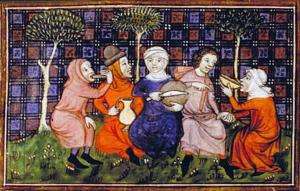
Therefore, Medieval kings did not need spices to spruce up the rotten meats they were consuming regularly during the Middle Ages. As writer Elizabeth Chadwick says, “If you find anyone telling you that people disguised their tainted food with spices, take it with a large pinch of salt!”
What are some of your favourite spices? Please share in the comments!
Sources:
Chadwick, E. 2024. “Something Rotten Round Here: The Myth about the Medieval Spicing of Tainted Meat.” https://elizabethchadwick.com/blog/the-myth-about-the-medieval-spicing-of-rotten-meat/.
Delahoyde, M. n.d. “Medieval Food.” WSU. https://public.wsu.edu/~delahoyd/medieval/medieval_food.html.
McCormick Science Institute. 2019. “History of Spices.” McCormick Science Institute. https://www.mccormickscienceinstitute.com/resources/history-of-spices.
McDonald, J. 2014. “Medieval Food and Cooking.” www.castlesandmanorhouses.com. https://www.castlesandmanorhouses.com/life_04_food.htm.
Myers, D. n.d. “Drummond’s Rotten Meat: When Good Sources Go Bad.” https://www.medievalcookery.com/notes/drummond.pdf.
Noelle, J.G. 2015. “Medieval Meals Made Not-So-Easy (Medieval Mondays #2b).” A Frame around Infinity. A Frame Around Infinity. https://jannagnoelle.com/2015/06/29/medieval-meals-made-not-so-easy-medieval-mondays-2b/.
Shearer, D. 2023. “Did Medieval Europeans Eat Rotten Meat?” Substack.com. Dang Dude, What The Heck? https://dylanshearer.substack.com/p/did-medieval-europeans-eat-rotten.
Singh, M. 2015. “How Snobbery Helped Take the Spice out of European Cooking.” NPR.org. https://www.npr.org/sections/thesalt/2015/03/26/394339284/how-snobbery-helped-take-the-spice-out-of-european-cooking.
Snell, M. 2018. “Medieval Food Preservation Methods.” ThoughtCo. https://www.thoughtco.com/medieval-food-preservation-1788842.
Tastes of History. 2021. “Dispelling Some Myths: Mediæval Peasants Ate Bland Food.” Tastes of History. https://www.tastesofhistory.co.uk/post/dispelling-some-myths-medi%C3%A6val-peasants-ate-bland-food.
University of Bristol. 2019. “May: Medieval Peasant Menu | News and Features | University of Bristol.” Www.bristol.ac.uk. https://www.bristol.ac.uk/news/2019/may/medieval-peasant-diet.html.
Wikipedia Contributors. 2024. “Adulterant.” In Wikipedia, The Free Encyclopedia. https://en.wikipedia.org/wiki/Adulterant.
Wikipedia Contributors. 2024. “Medieval cuisine.” In Wikipedia, The Free Encyclopedia. https://en.wikipedia.org/wiki/Medieval_cuisine.
Wikipedia Contributors. 2024. “Spice trade.” In Wikipedia, The Free Encyclopedia. https://en.wikipedia.org/wiki/Spice_trade.

